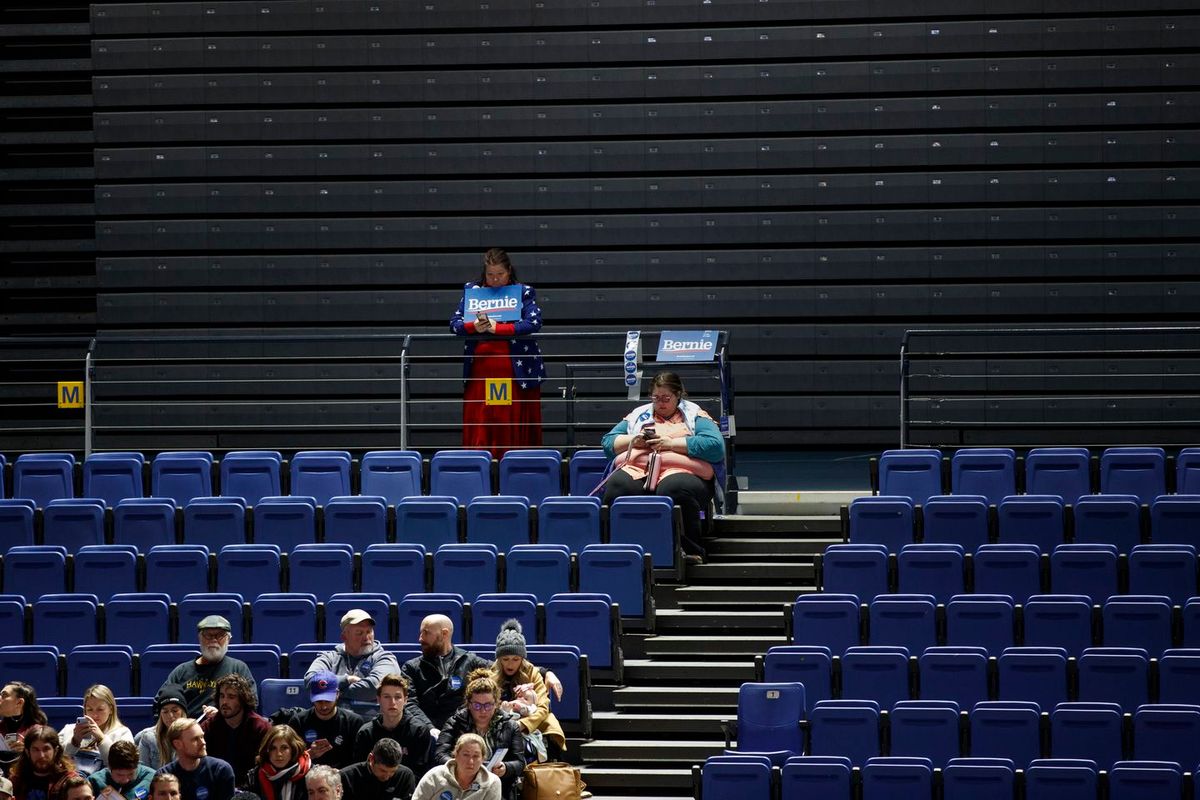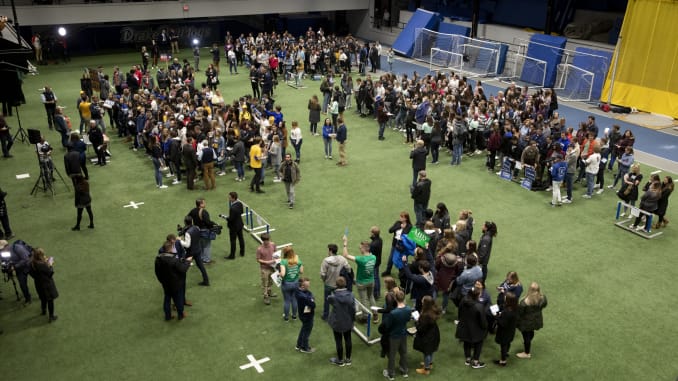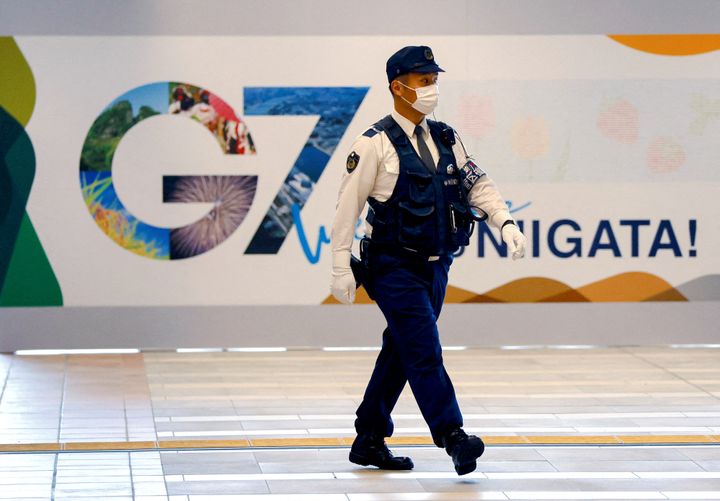Uncertainty causes delays as Iowa caucus kicks off Democratic primaries for president

A few minutes every morning is all you need.
Stay up to date on the world's Headlines and Human Stories. It's fun, it's factual, it's fluff-free.
On Monday, February 3, 2020, Iowa was the site of the first nominating caucus for the 2020 presidential campaign. After two rounds of caucusing, technological issues have caused uncertainty over which candidates have enough supporters to earn delegates for the next round in Iowa’s complicated nomination process.
The Iowa caucuses are just the first of dozens of state caucuses and primaries the Democratic candidates will compete in. The goal is to gain the majority of delegates for the Democratic National Convention in July.
The winner will then become the Democratic Party’s official candidate to take on President Donald Trump in the national election on November 3, 2020.
How caucus was supposed to work
Prior to the official voting period, the Democratic candidates spoke to the caucus attendees in one last push to earn their support.
Starting at 7 pm Central Standard Time (CST), supporters of the various candidates for president split into groups based on the candidate they supported.
Across 1,679 precincts in Iowa (as well as three locations abroad), voters gathered at designated caucus locations. Rather than filling out ballots, the supporters for each candidate assembled in specific area sets for each candidate. The caucus attendees were then to be counted to determine how many people supported each candidate.

If a candidate had 15% or more support from the people at the caucus, they would be considered “viable” and their total support would be counted toward earning state delegates. These delegates are then ultimately the ones who vote for the candidate.
There was then a second round for candidates who did not reach the 15% threshold. Their supporters needed to realign to join the group of another candidate who was viable, or merge with the supporters of another non-viable candidate to reach the necessary threshold.
Uncertain results
The results from Iowa’s caucus have been delayed as a result of “‘quality checks’ and new reporting rules,” reports AP News.
The issues came from “inconsistencies" found in the reporting of results. The count was being done by a specially created smartphone app that was to organize the totals across all precincts. As backup, officials were also using paper cards on which attendees wrote down their preferred candidate.

Issues with the app have led to using photos of the caucus groups and the paper trail to verify results. There had also been reports that some caucus officials struggled to download the app.
Mandy McClure, a spokesperson for the Democratic Party said, “This is simply a reporting issue, the app did not go down and this is not a hack or an intrusion. The underlying data and paper trail is sound and will simply take time to further report the results.” It is unclear when results will be available.
Complications involved
As NPR explains, Monday’s caucus was only the first step in a complicated and drawn-out process. Monday’s results will determine 11,402 delegates to go to county conventions on March 21. From there, all delegates are filtered down twice more, once at the congressional district conventions on April 25, and again at the state convention on June 13.
Once complete, Iowa will send 41 delegates to the Democratic National Convention. That puts the state in the lower end of state delegate totals, with the two biggest states, California and New York, having 415 and 274 delegates, respectively.
There are nine states that hold Democratic caucuses, as well as three US territories (American Samoa, the US Virgin Islands, and Guam).
Role as the first caucus state
Iowa once again was the first primary state of the 2020 presidential contest, as has been the case since 1972. Due to Iowa’s complicated nominating process, the state moved up the date of its caucus to give the state enough time to complete the entire process before the national convention.
Though the total number of delegates that can be won from Iowa is relatively small and the delegates won’t be determined until after many of the other states, Iowa is often seen as a bellwether state. Since 1980, the winner of the Iowa caucus went on to win the Democratic nomination six out of eight times.
What happens next in the primaries?
There are two more state primaries and one more caucus in February, with New Hampshire’s primary on the 11th, Nevada’s caucus on the 22nd, and South Carolina’s primary on the 29th. March 3 is the busiest day for primaries, with 14 state primaries or caucuses, as well as American Samoa’s caucus and a primary for Democrats abroad. That collection of primaries is known as “Super Tuesday.”
State and US territory primaries will run until June 6, when the Virgin Islands will hold the final caucus of the year.
Democratic National Convention
The Democratic National Convention, which will be held in Milwaukee, Wisconsin from July 13-16, is where the party officially nominates its presidential candidate. To earn the candidacy, a candidate must earn a majority of the expected 3,979 total pledged delegates on the first ballot at the convention.
If no candidate gets enough delegates after the first ballot, it becomes a “brokered convention” and the party’s “superdelegates” will be able to vote on the second ballot.
Superdelegates are largely members of the Democratic National Committee and party leaders who can vote for whoever they like.
In a second ballot, the winning candidate needs a majority of potentially 4,743 total delegates. That includes the 3,979 pledged delegates and approximately 764 superdelegates.
[article_ad]




Comments ()